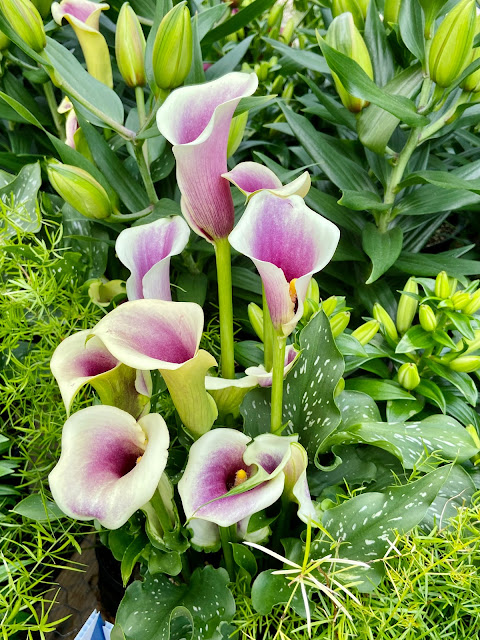The lilies dominated at the floral exhibition in the Arboretum, but Calla lilies were a significant part of this exhibition.
Calla lilies have long been a symbol of rebirth and resurrection and are closely associated with Easter.
Calla
lilies come in white and shades of pink, yellow, orange, pink and
maroon. Some also have nice white spots on the leaves, so they are
attractive even when not in bloom.
This tropical flower, which
blooms for weeks, is native to southern Africa where it is considered a
weed. It has been naturalized in warm parts of the United States, such
as California, where it is an invasive species.
Calla lilies are
not really true lilies, they are similar to regular lilies and share
many common characteristics. Callas belong to a different plant family
and are related to Jack-in-the-Pulpit and caladium.
Calla lilies
are very dangerous to pets and humans if any part of the plant is
swallowed. The juice may cause skin or eye irritation.
Lilie kalii od dawna są symbolem odrodzenia i zmartwychwstania i są ściśle związane z świętami wielkanocnymi.
Kalie występują w kolorze białym i odcieniach różu, żółci,
pomarańczy, i bordowego. Niektóre mają również ładne białe plamki
na liściach, więc są atrakcyjne nawet wtedy, gdy nie kwitną.
Ten
tropikalny kwiat, kwitnący tygodniami, pochodzi z południowej Afryki
gdzie jest uważany za chwast. Został znaturalizowany w ciepłych
częściach Stanów Zjednoczonych, takich jak Kalifornia, gdzie jest
gatunkiem inwazyjnym.
Lilie kalii, tak naprawdę nie są prawdziwymi liliami, są podobne do zwykłych lilii i mają wiele wspólnych cech. Kalie należą do innej rodziny roślin i są one spokrewnione z jack-in-the-pulpit i caladium.
Ten kwiat jest niebezpieczny dla zwierząt domowych i ludzi, jeśli
jakakolwiek część rośliny zostanie połknięta. Sok może powodować
podrażnienie skóry lub oczu.



















